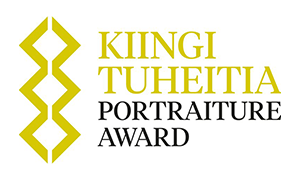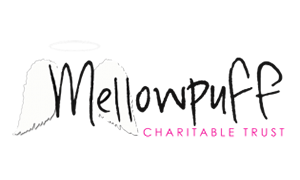Community
Forsyth Barr is proud to support the Kiingi Tuheitia Portraiture Award
“There is power in being seen,” says Jaenine Parkinson, the head of the National Portrait Gallery in Wellington. “Who we choose to put on the walls is really meaningful.”
In the past, the people chosen to be on the walls tended to be politicians, explorers or those born into privilege. But she says the gallery’s role is increasingly about telling the stories of all New Zealanders through the art of portraiture.
“We’re trying to show portraiture for Aotearoa in the 21st century. What can we uniquely contribute? What is our place in the world? Where do we come from? Who are the people who have had an impact on the past?”
Uplifting young Māori artists
As part of that shift, the gallery launched a new biennial prize in 2020 that aimed to uplift young Māori portrait artists under the age of 35 and connect them to their tūpuna (ancestors). The late Kiingi Tuheitia, the Māori monarch and King of the Kiiingitanga, gifted the prize to the gallery.
“Many Māori have lost their connection to their whakapapa, so the challenge is to find and express that in some shape or form.”
Entrants are filtered via an online process and the finalists are then exhibited at the gallery. The judges decide on the winner and runner up in person, and visitors to the gallery also have a chance to vote for their favourite in the Forsyth Barr People’s Choice Award.
“We feel like it’s important to see the pieces in person. There’s real value in having an in-person encounter with an artwork … We’re very proud of the partnership and it’s great that Forsyth Barr can be a partner to support that kaupapa. Art often sparks debate and challenges us to think. And People’s Choice allows them to have a say in what speaks to them.”
Nationwide impact
Jaenine says they took the idea of sponsoring the award to Forsyth Barr because there was high engagement with it and also because the exhibition tours the country. At the moment it’s showing at the Waitangi Treaty Grounds, so locals and visitors who come from around the world to learn about that partnership get to see the exhibition.
“It’s the perfect spot for it there. But Forsyth Barr offices are located across the country and it’s an opportunity to connect with audiences many times over. They can bring their community to see it. They can also host clients at those locations. So it works well.”
In addition to funding the prize, Forsyth Barr can also help showcase the artwork to a wider audience who may be interested in purchasing the artworks.
“Some of the artworks are for sale. It is a commercial opportunity for these artists as well. And not just for that one piece. Often we hear that commissions come out of it.”
Art and creativity can come from anywhere. And awards like this can be helpful for drawing out talent from often hard to reach communities. For example, one of the past winners wasn’t a practising artist and worked as a comms manager for the New Zealand Warriors rugby league team. “The idea that art and sports don’t mix, we put that to bed,” she laughs.
Inspiring others
The winner of the Adam Portraiture Award, which happens every other year, said she was inspired by the previous winner, who was 18 and hadn’t gone to art school. “She thought ‘if she can do it, then I can do it too.’ That is what the late Kiingi Tuheitia was really keen on. Anyone could enter and anyone could win.”
Seeing people who look like you on the walls of a national institution is powerful, Jaenine says. “It says a lot. It says we’re inclusive, it says we’re committed to things like Te Tiriti … The wharenui is the oldest portrait gallery in Aotearoa, so it makes sense there’s a bicultural foundation to what we do.”
The gallery aims to honour that foundation - and the stories of other ethnic communities - with its own exhibitions, but the Kiingi Tuheitia Portraiture Award is a way to “bring it to life and show the potential”.
While traditional portraiture typically relied on realism, many of the entrants take a more contemporary and abstract approach and that can be challenging, she says. For example, the last winner’s work had no recognisable face because it was about an ancestor they had never met. “It really challenged the traditions of what portraiture is. It brought in Māori ideas of whakapapa and storytelling and the connection to the past.” The entrants also embrace different visual mediums, like weaving, clay and carving.
At a time of increasing division, Jaenine says the arts can be a good way to “build partnerships in a way that makes them visible and real”. It could be something that young Māori artists are interested in contributing to, something Pākehā audiences are interested in attending, or something new refugee communities can relate to. “Portraiture can be an idea that speaks across cultures,” she says.
To find out more, visit www.nzportraitgallery.org.nz/kiingituheitiaaward
Giving back to New Zealanders
Read the articles below to find out more about some of the groups and initiatives across the country that we support, or download our latest Forsyth Barr in the Community booklet.

Kiingi Tuheitia Portraiture Award

Mellowpuff Charitable Trust

